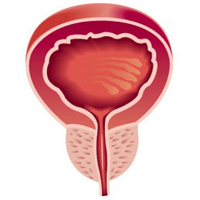Free prostate-specific antigen outperforms total prostate-specific antigen as a predictor of prostate volume in patients without prostate cancer

All claims expressed in this article are solely those of the authors and do not necessarily represent those of their affiliated organizations, or those of the publisher, the editors and the reviewers. Any product that may be evaluated in this article or claim that may be made by its manufacturer is not guaranteed or endorsed by the publisher.
Objective: In the management of benign prostatic hyperplasia (BPH), urology guide- lines recommend medical or surgical treatments according to different prostate volumes (PV). The aim of this study was to analyze the relationships between PV and age, total and free prostate specific antigen (tPSA, fPSA) and fPSA/tPSA ratio in patients without histologically proven prostate cancer.
Materials and methods: A retrospective analysis was made of the data of 1334 patients who underwent transrectal ultra- sound (TRUS)-guided prostate biopsy between January 2016 and October 2018. A total of 438 patients with available data for age, tPSA and fPSA levels and PV calculated by TRUS were enrolled in the study. Patients with chronic prostatitis pathology in addition to BPH were also noted and evaluated as a separate group.
Results: There were significant correlations between PV and age, tPSA, fPSA, fPSA/tPSA ratio (r = 0.210, r = 0.338, r = 0.548, r = 0.363 respectively). In multivariate linear regression analysis, fPSA was found to be the only predictor for PV (p < 0.001) when compared to age (p = 0.097), tPSA (p = 0.979) and fPSA/tPSA ratio (p = 0.425). In patients with chronic prostatitis pathology there were significant correla- tions between PV and age, tPSA, fPSA, fPSA/tPSA ratio (r = 0.279, r = 0.379, r = 0.592, r = 0.359, respectively). The multivariate linear regression analysis showed a signifi- cant correlation only between PV and tPSA and fPSA/tPSA ratio but not with fPSA and age (p = 0.008, p = 0.015, p = 0.430, p = 0.484, respectively). In men with only BPH pathology there were significant correlations between PV and age, tPSA, fPSA, fPSA/tPSA ratio (r = 0.223, r = 0.385, r = 0.520, r = 0.287, respectively) In multivariate linear regression model the significant correlation was shown only between PV and fPSA (p < 0.001).
Conclusions: Although tPSA was significantly correlated with PV in patients without prostate cancer, the correlation between fPSA and PV was much stronger. However, it should be kept in mind that the efficacy of fPSA may be limited in patients with clinically unknown prostatic inflammation.
PAGEPress has chosen to apply the Creative Commons Attribution NonCommercial 4.0 International License (CC BY-NC 4.0) to all manuscripts to be published.


 https://doi.org/10.4081/aiua.2020.1.1
https://doi.org/10.4081/aiua.2020.1.1



